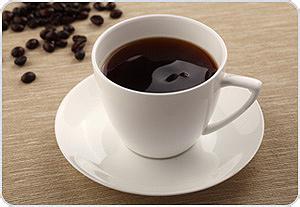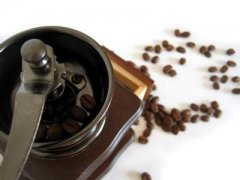Coffee roasting is the finishing touch of coffee beans

Baking is equivalent to giving coffee beans the finishing touch. The flavor of the coffee bean itself is latent, and only moderate baking can attract its amorous feelings, just as dry wood needs fire. In the eyes of experts, 80% of the factors that determine the taste of coffee come from raw beans and 20% depend on roasting. Baking is divided into deep, moderate and shallow three kinds of baking, these three baking methods themselves are not high or low, or the coffee beans themselves are suitable for what kind of baking method, the key lies in the baking method. If the technique is wrong, even the best beans will be scrapped. The most difficult thing about baking coffee is the best time to stop, which depends on how the roaster captures the characteristics of coffee beans. This should be judged by experience and pay attention to the changes in temperature, color, sound, aroma, shape and luster of beans.
All coffee tastes bitter and sour. Generally speaking, the lighter the degree of roasting, the stronger the sour taste of coffee. The deeper the baking degree, the stronger the bitterness. Deep roasting is suitable for coffee with strong sour taste. Light roasting is suitable for bitter coffee, which can release the sour taste, ease the excessive bitterness and balance the taste. However, coffee has an expiration date, no matter how superb the roasting method is, you should drink it up within two weeks after baking, otherwise the flavor will be greatly reduced.
After the correct picking, production and baking, we came to the last two gates of import, grinding and extraction. The two processes complement each other. The thickness of the grinding determines the way in which coffee is extracted. Generally speaking, fine powder is the easiest to extract the essence, so it takes the shortest time, which is extracted immediately after being washed quickly with water of 90 degrees Celsius, using an Italian machine and a mocha kettle. For moderate grinding, it is usually drunk by the family. Preheat coffee cups and coffee pots to make the coffee more fragrant. The water temperature is generally 85 to 90 degrees Celsius, mainly hand flushing pots, dripping pots and siphon pots. As for the coarse powder, it should be on the French kettle, which takes the longest extraction time, and the water temperature is also between 85 and 90 degrees Celsius.
Important Notice :
前街咖啡 FrontStreet Coffee has moved to new addredd:
FrontStreet Coffee Address: 315,Donghua East Road,GuangZhou
Tel:020 38364473
- Prev

Coffee beans would rather have some kind of basic knowledge of coffee.
Thousands of years ago, when Chen Sheng and Wu Guang rose up, he shouted: how dare a prince? Of course, it sounds very pleasant to us, who have long been used to the idea of equality for all, but if this sentence is put on the coffee beans, it is estimated that the beans will jump out and object: we all have to talk about our origins! In our opinion, they are all small black charcoal-like coffee beans, in senior coffee.
- Next

Coffee bean common sense "grass aroma" flavor of Rwandan coffee
Rwandan coffee is absolutely high quality in the form of washed Arabica beans. As far as Africa is concerned, its coffee industry stands out because the country rises and falls by producing the best possible beans. The taste of Rwandan coffee is described as a grassy aroma with tropical climate characteristics. The country's fertile soil and climate help plants grow, and coffee trees seem to be driven
Related
- Beginners will see the "Coffee pull flower" guide!
- What is the difference between ice blog purified milk and ordinary milk coffee?
- Why is the Philippines the largest producer of crops in Liberia?
- For coffee extraction, should the fine powder be retained?
- How does extracted espresso fill pressed powder? How much strength does it take to press the powder?
- How to make jasmine cold extract coffee? Is the jasmine + latte good?
- Will this little toy really make the coffee taste better? How does Lily Drip affect coffee extraction?
- Will the action of slapping the filter cup also affect coffee extraction?
- What's the difference between powder-to-water ratio and powder-to-liquid ratio?
- What is the Ethiopian local species? What does it have to do with Heirloom native species?

